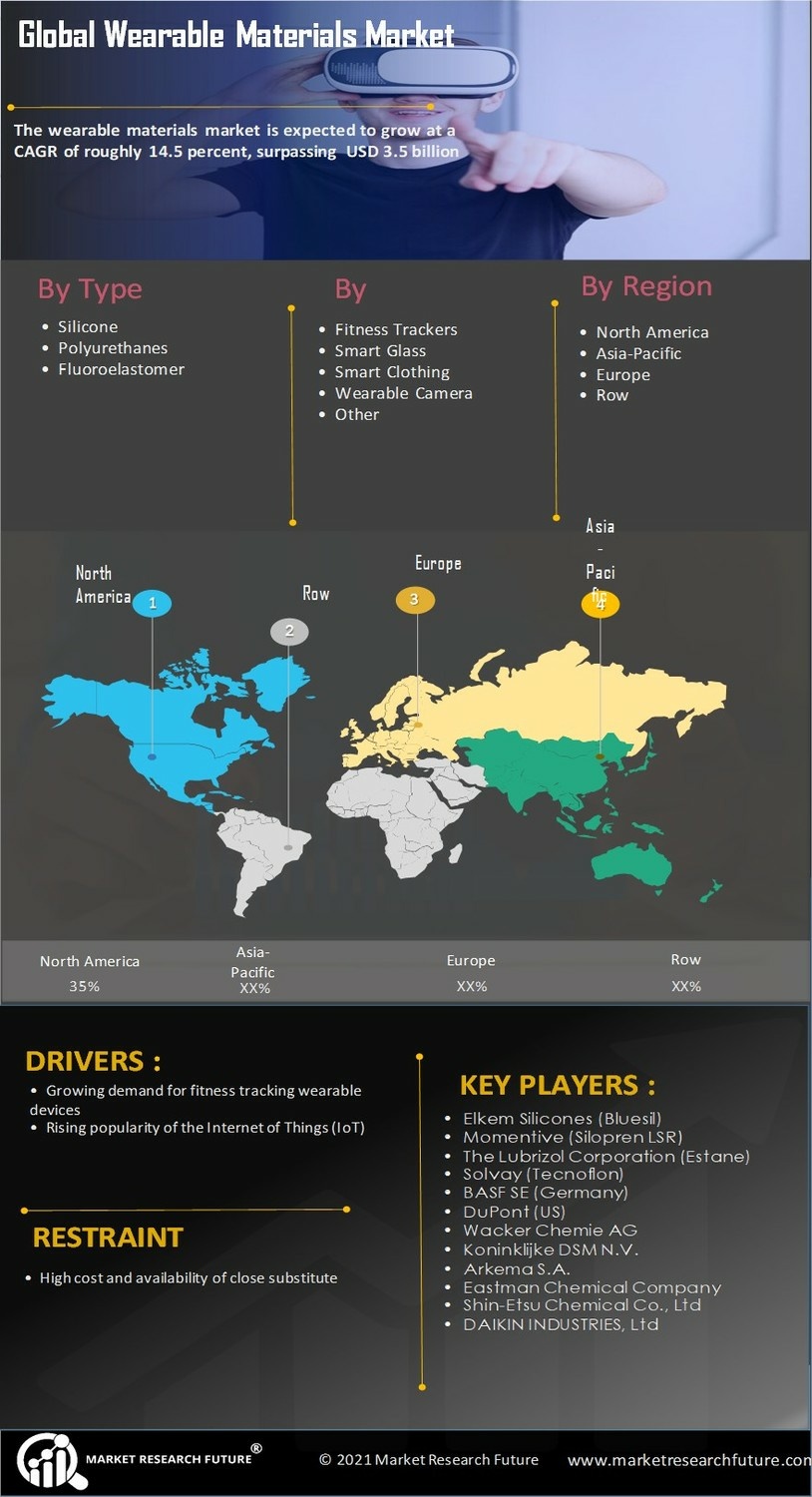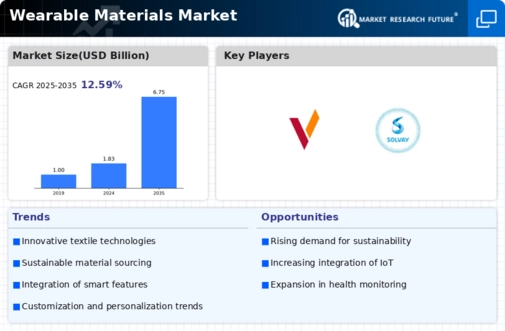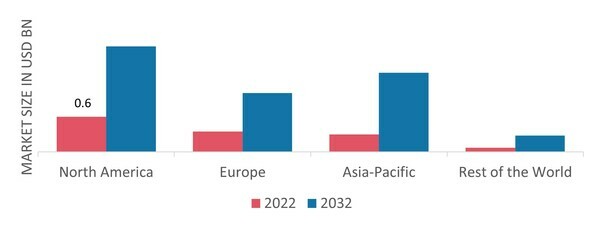Market Growth Projections
The Global Wearable Materials Market Industry is expected to experience robust growth in the coming years. Projections indicate that the market will reach a value of 1.83 USD Billion in 2024 and is anticipated to grow to 6.75 USD Billion by 2035. This growth trajectory suggests a compound annual growth rate (CAGR) of 12.6% from 2025 to 2035. The increasing adoption of wearable technology across various sectors, coupled with advancements in materials science, is likely to drive this expansion. As consumer demand for innovative and functional wearables continues to rise, the market is set to evolve significantly.
Integration of IoT in Wearable Devices
The integration of Internet of Things (IoT) technology into wearable devices is transforming the Global Wearable Materials Market Industry. IoT-enabled wearables can collect and transmit data seamlessly, allowing for enhanced user experiences and improved functionality. For instance, smart fitness trackers can sync with mobile applications to provide users with personalized insights and recommendations. This connectivity not only enhances the utility of wearables but also encourages manufacturers to explore new materials that support advanced features. As IoT adoption continues to rise, the demand for innovative wearable materials is expected to grow, contributing to the overall market expansion.
Growing Interest in Fitness and Wellness
The increasing focus on fitness and wellness among consumers is significantly influencing the Global Wearable Materials Market Industry. As more individuals prioritize health and fitness, the demand for wearables that assist in tracking physical activity and health metrics is surging. Wearable devices such as fitness bands and smartwatches are becoming essential tools for fitness enthusiasts. This trend is likely to drive manufacturers to invest in advanced materials that enhance the functionality and comfort of these devices. Consequently, the market is poised for substantial growth, with projections indicating a market value of 1.83 USD Billion in 2024.
Increasing Consumer Awareness and Adoption
Consumer awareness regarding the benefits of wearable technology is on the rise, which is positively impacting the Global Wearable Materials Market Industry. As individuals become more informed about the functionalities and advantages of wearables, such as fitness tracking and health monitoring, the adoption rate is expected to increase. This trend is particularly evident among younger demographics who are more inclined to integrate technology into their daily lives. The growing acceptance of wearables is likely to drive demand for innovative materials that enhance comfort and usability, further propelling market growth in the coming years.
Rising Demand for Health Monitoring Devices
The increasing prevalence of chronic diseases and the growing emphasis on preventive healthcare are driving the demand for health monitoring devices. The Global Wearable Materials Market Industry is witnessing a surge in the adoption of wearable technology that facilitates real-time health tracking. For instance, smartwatches equipped with sensors for heart rate and blood oxygen levels are becoming commonplace. This trend is expected to contribute to the market's growth, with projections indicating a market value of 1.83 USD Billion in 2024. As consumers become more health-conscious, the integration of advanced materials in wearables is likely to enhance user experience and functionality.
Technological Advancements in Wearable Materials
Innovations in materials science are significantly influencing the Global Wearable Materials Market Industry. The development of lightweight, flexible, and durable materials is enabling manufacturers to create more comfortable and efficient wearable devices. For example, the incorporation of conductive fabrics and smart textiles allows for seamless integration of technology into everyday clothing. These advancements not only improve the performance of wearables but also expand their applications across various sectors, including sports, healthcare, and fashion. As a result, the market is projected to grow at a compound annual growth rate (CAGR) of 12.6% from 2025 to 2035, reaching an estimated value of 6.75 USD Billion by 2035.




